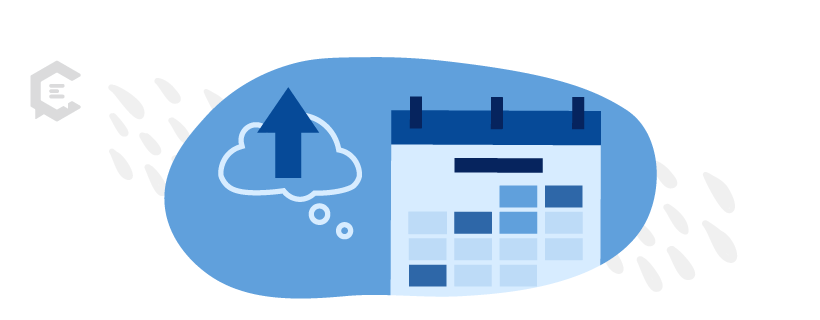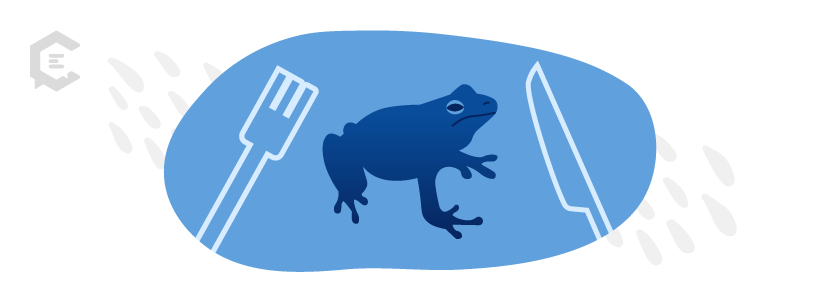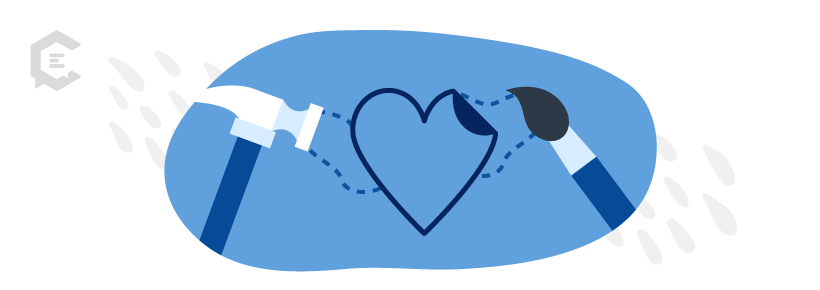One of the best aspects of a full-time freelance lifestyle can also be one of the most challenging: the ability to set your own schedule.
Without a boss in the office to check up that you’re doing your work, it’s up to freelancers to motivate themselves to meet their deadlines and be productive. Otherwise, waiting until the last minute or rushing to complete projects can result in sloppy, error-filled work.
Proper time management can even impact your mental well-being. A 2019 study published in “Sage Journals” found effective time management is associated with lower anxiety levels and better performance.
How to improve freelance productivity and focus in five steps
But freelancers may face lots of distractions, especially when working from home. Family obligations, chores, pets, kids, social media and even the TV could pull you away from your work. When you’re able to focus on the task at hand, you can produce better work. That can lead to better clients.
Plus, you can finish your day earlier knowing you’ve turned in excellent-quality assignments. With more time, you could potentially take on more work — and make more money. You can use these tips to increase your focus and be a more productive freelancer.
1. Use a calendar
If you’ve ever crossed an item off a to-do list, you know how rewarding that feeling can be. You can use a calendar to write out a visual view of your schedule, so you know exactly what’s on your plate and how to organize your time.
There’s a variety of calendar-ing methods you can use. You might experiment with a few to see what you prefer. Some ideas:
- Use the cloud. Putting your to-dos in the cloud is beneficial since you’ll always have a list of what’s on your plate, from any connected device. If you’re away from your workstation, you can pull up your tasks on your smartphone and gain more clarity into what your day and week are shaping up to be. You can use a tool like Google Docs in Google Drive to keep track of assignments by day and erase them as you finish them. Google Calendar enables you to time-block your day so you can focus, too.
- Write a daily desire list. Writing things down on paper can be powerful. A 2021 study published in “Frontiers in Behavioral Neuroscience” found using a paper notebook activates brain regions associated with memory-encoding more robustly than using digital devices. You can use a planner (I love the motivational planners by Idlewild Co.) to jot down a daily “desire list,” which are things you want to accomplish by the end of the day. You could include items like, “Finish all assignments. Dust my home. Read a chapter of my book.” Reference your list throughout the day to stay on track.
- Block out unavailable time. If you have meetings with clients, you can invite them to schedule them on a shared calendar like Calendly. Give yourself some breathing room to prep before a meeting and regroup after meetings. Block out time on a shared calendar so clients don’t schedule back-to-back-to-back meetings and overwhelm you.
When you’re a freelancer, you’re in charge of your schedule. Treat yourself as a client you’re assisting as you plan your workload. Organize your monthly, weekly and daily tasks with a calendar so you set yourself up for success.
2. Maintain a realistic workload
A steady workload is great (and often a must-have) for life as a freelancer. But taking on too much work can spread you thin. An overwhelming workload could paralyze you mentally and make you avoid your list altogether, which could lead to panic when deadlines loom.
Be realistic about your capacity. Use task duration estimation to understand what your weekly workload looks like, so you can be more confident when you accept or decline a project.
If you’re new to task duration estimation, here’s how to do it.
- Time yourself with each project. Keep track of your project times so you get a better understanding of how long a typical project takes. For example, you might learn that it typically takes you 15 hours to work on an ebook. You might need five hours to work on the average email campaign.
- Budget your time. Understand how many working hours you have each day. You may need to account for work time like client meetings, marketing yourself and email communication. With what’s left over, that’s a realistic view of your time available for each day.
- Overestimate project duration. It’s always safer to overestimate how long a project will take rather than find out you have less time than you need. You might want to add in an extra hour or two to what you anticipate a project will require when you accept new projects.
The more often you measure the time it takes to complete various projects, the better you’ll be able to predict your workload each week. You can use Microsoft Excel or a cloud-based tool like Google Sheets to track your projects and average out time spent on various tasks.
This method is also helpful for being able to estimate pricing for prospective clients. If a client wants to pay you hourly and wants you to bid or estimate your time, you can use data to convey your value when you negotiate with clients.
3. Eat your frog
How does eating a frog sound? Unless you’re into that particular delicacy, you may not be enthused.
Author Brian Tracy named his book “Eat That Frog!” after this concept. When you have a list of things to do, it may be helpful to “eat your frog.” In other words: Tackle your least-appealing assignment first.
Why is this effective?
- You may have more energy when you start your day compared to later in the day. That’s why it might be best to work on your most difficult task first.
- Once that task is done, all other to-dos for the day seem a little easier to complete.
- If you do have less energy the longer your day proceeds, it will be less challenging to tick through your list since the easier tasks are what’s left.
Maybe as a freelancer, you’ve chosen to “start your day” at night, because that’s when you work best. Try eating your frog next time you begin a block of work to see if the effects benefit your productivity.
4. Take breaks
Taking breaks is good for productivity. Breaks help you avoid burnout. They give you a chance to reset. They can also energize you, especially when they support your health. For example, if you’re dehydrated, taking a break to drink water can replenish you. Using a break to walk around the block can release feel-good endorphins that positively impact your work.
Research has shown breaks can improve concentration, enhance work mentality and even help professionals avoid injuries. But what’s the optimal way to work breaks into your schedule?
The Muse did a study that found productivity is highest when you work for 52 minutes straight, then take a 17-minute break. You can use a smartphone timer to try this unique work-break schedule yourself and see if it benefits you.
If you have an Apple Watch, you could get alerts to stand every hour. Use that time to take a 10-minute walk or stretch your legs. You may choose to take a longer break between assignments. If your day typically involves working on two or three projects, you might take a break whenever you switch clients.
What works for you may be different than what another freelancer prefers. If you have kids who need attention or your dog needs a walk, that might be your break time. Just be sure to schedule breaks in your day (maybe even into your calendar!) so you can be more energized when you work.
5. Focus on passion projects
One reason why people become full-time freelancers is so they can work on what they actually want to work on. But sometimes, especially when you’re just starting out, you might take on work you’re not excited about. If you’re trying to build your business or you’re experiencing a dry spell in assignments, it could be tempting to say “yes” to whatever opportunities come your way.
This mindset can negatively impact your productivity, though. When you dread what you have to work on, you might procrastinate or put in a half-hearted effort. That could result in poor-quality work, which could hurt your reputation as a freelancer — all due to an assignment you never wanted to take on in the first place.
Try to focus your workweek on assignments you look forward to working on. If you have less work than you want, you could use your extra time to do something productive for your business, like:
- Market yourself with your own personal website and blog.
- Reach out to some connections on LinkedIn to check in.
- Research companies you’re interested in working for. Make some new connections with hiring managers.
You want to earn a meaningful paycheck, but the goal should be to have a job where it’s easy to be productive because the work is more fun than, well, work. Before you take on an assignment, make sure it’s one you’ll be able to approach positively so that it doesn’t derail your productivity.
What are your tips for better freelance productivity and focus?
We want to hear what works for you. Freelancing is a unique job and lifestyle. You’re in control, as you own your business. Share your tips with the freelance world. Tweet us @ClearVoice to share the techniques you use.






